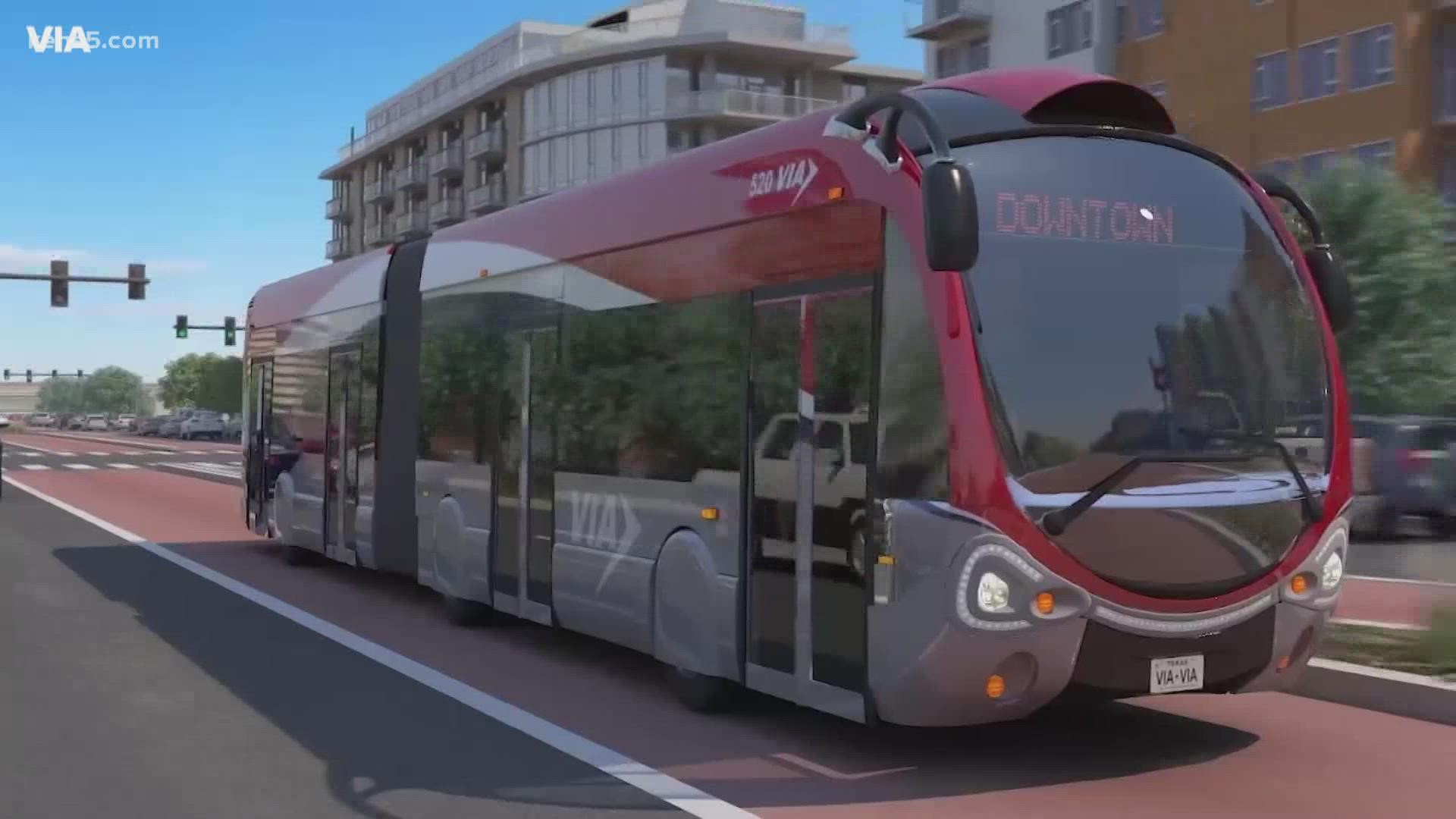SAN ANTONIO — The White House last week recommended funding part of San Antonio's Advanced Rapid Transit plan with a special capital improvement grant.
It is the only Texas project to receive such an endorsement this year.
The feds would cover $158 million of the roughly $320 million proposal that could be operational by 2027. If approved, construction could begin in 2025.
"When we complete the steps the (Federal Transit Authority) requires us to complete successfully, the money will be there," said VIA CEO and President Jeffrey Arndt. "It's exciting."
Like a light rail system on rubber tires, city leaders aim to dedicate traffic lanes along San Pedro Avenue for high-tech buses. The route would span roughly 12 miles, from San Antonio International Airport through downtown to Mission Concepcion.
Passengers would pay fare at special kiosks before they board.
"You do it all on the platform," Arndt said. "Then when the vehicle arrives, multiple doors can open at once because you don't have to go by the fare box... That's a game-changer, as far as the amount of time it takes on the system."
Buses would arrive at the special stops every 10 or 15 minutes. Arndt says that frequency is key to attracting riders.
Passengers would then board from elevated platforms so those in wheelchairs could enter without delay.
Buses will also feature signal pre-emption technology, allowing drivers to extend green lights or change signals.
"There's limits to that but it will help us move forward faster," Arndt said.
Project design is not complete, so it's not yet clear exactly how engineers will configure existing roadways. Certain areas will not allow for dedicated lanes in the center of the road, Arndt said.
"We're not going to widen the street in the (Monte Vista) area, so we'll end up... in the curb lanes. They'll become business access lanes," he added.
Unlike trolleys or railcars, buses can exit the dedicated lanes to avoid obstacles or wrecks.
In theory, the project could reduce congestion by moving more people along the same right-of-way in a single vehicle.
"It's going to be frequent. It's going to be faster. It's going to be easier to use," Arndt said. "It's a far more attractive service than anything we currently offer."
VIA aims to eventually expand the project with a corridor running East to West.
Workers will continue engineering the project and conduct environmental impact reviews this year. Arndt hopes to secure final approval and deposit the federal grant by the end of 2024.

